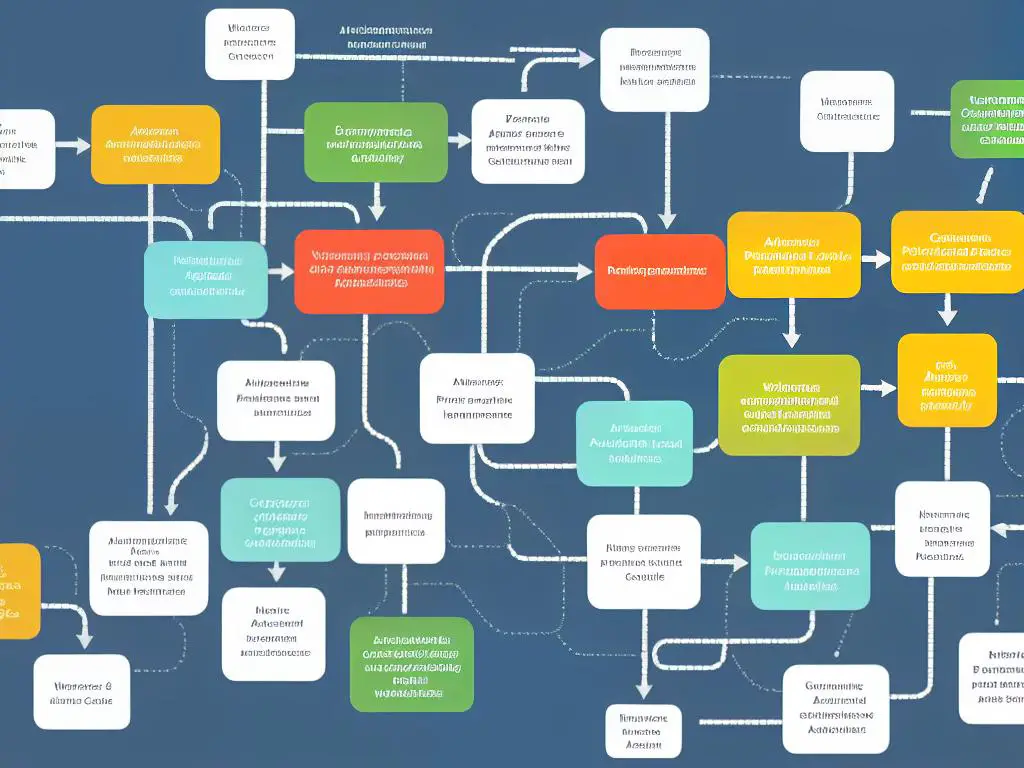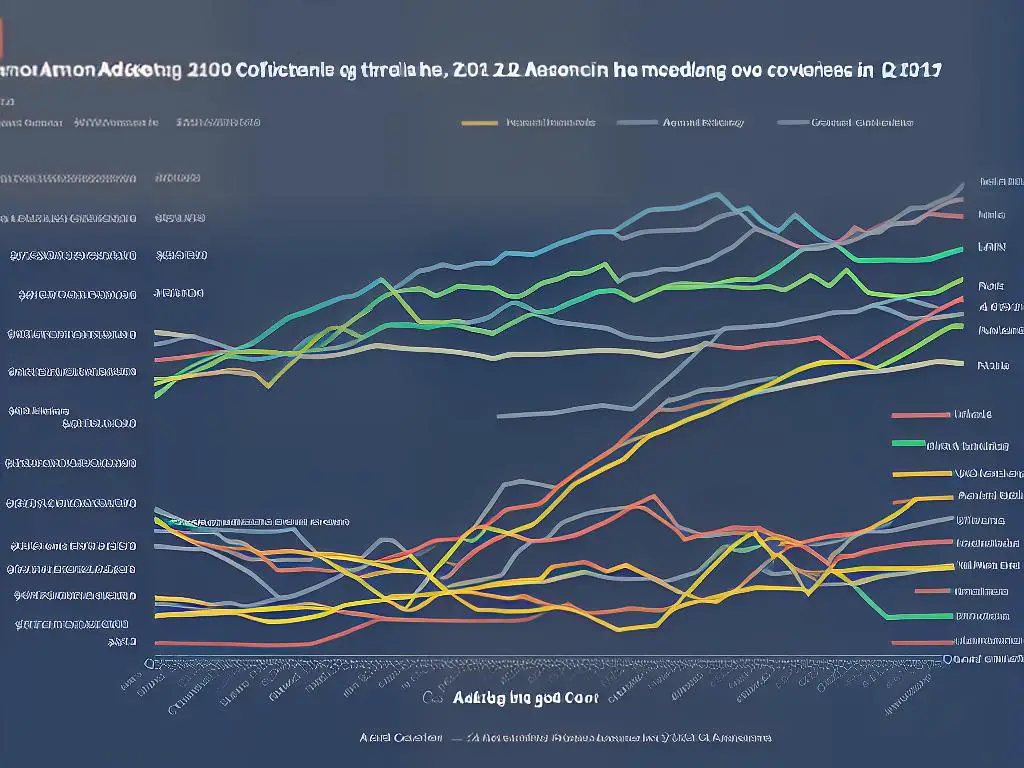In the dynamic advertising industry, costs and strategies fluctuate with each passing quarter, reflecting the unpredictable nature of this critical business function. The final quarter of the year, Q4, is a particularly notable period due to the marked increase in advertising costs. This surge can be attributed to a range of factors, from the holiday shopping frenzy to last-minute budget usage. The improved understanding of these Q4 trends is crucial for businesses and advertisers to navigate this challenging and potentially lucrative period. This exploration dives into the heart of advertising intricacies, the Q4 phenomenon, its impacts on advertisers, and the comparative difference with other quarters, while revealing strategies to effectively navigate through this cycle.
Understanding the Advertising Cycle
Fundamentals of the Advertising Cycle
The advertising cycle is a systematic approach taken by companies and brands to strategically allocate their advertising budget and resources throughout the year. This cycle involves four essential phases: research, plan, implement, and review. The objective behind adhering to this cycle is to maximize the return on investment (ROI) while minimizing the costs of advertising. However, the costs of advertising can fluctinate throughout the year, largely dictated by market trends, seasonal consumer behavior, and the overall economic climate.
Seasonality’s Role in Advertising Costs
Seasonality plays a significant role in the advertising costs fluctuation. For instance, during times of high consumerism, like holidays and observance days, advertisers might spend more on their campaigns to capitalize on consumer spending habits. As a result, there is a surge in demand for advertising spots leading to an increase in its overall costs. Inversely, during low activity periods, the costs might drop due to reduced demand.
The Significance of Q4 in the Advertising Industry
A crucial period within the advertising circle is the fourth quarter, commonly referred to as Q4. This period, encompassing October, November, and December, is particularly important for advertisers due to several reasons. Firstly, the quarter is marked with significant shopping holidays like Halloween, Thanksgiving, Black Friday, Cyber Monday, and Christmas. Secondly, during this period, consumers are more inclined to spend more due to festive moods, year-end bonuses, and promotional offers.
These factors contribute to a significant surge in demand for advertising spots across different media channels. They drive competition among advertisers in securing prime advertising times and spaces, thus contributing to the rise in advertising costs during Q4.
However, it is crucial to note that while advertising costs may rise during Q4, many businesses consider it a profitable investment due to the potential revenue gains from enhanced visibility during peak consumer spending periods.
Understanding the Rise in Advertising Costs in Q4
The rise in advertising costs during Q4 can be better understood by analyzing how supply and demand dynamics interact within the advertising industry. As previously mentioned, Q4 is characterized by peak shopping holidays when advertisers intensify their advertising efforts to maximize sales. This increased demand coupled with fixed advertising space results in higher advertising costs.
Furthermore, it’s not just businesses that contribute to the demand surge. Political advertisements, particularly in an election year, can also contribute to the demand leading to a further increase in costs. This is because political campaigns typically use the same advertising platforms as businesses, further intensifying competition and driving costs higher.
Therefore, understanding these dynamics can greatly help brands and businesses plan their annual advertising budget and strategy more effectively.
While the uptick in advertising costs during Q4 might invoke budgetary concerns for marketers, it can, with strategic planning, turn into a significant investment leading to substantial returns. It’s crucial to comprehend the advertising cycles and the elements causing these cost variations. Doing so enables marketers to proficiently navigate and exploit this high-expense phase for optimal impact and ROI.

Reasons for Rise in Advertising Costs in Q4
Decoding Advertising Costs in Q4: A Synopsis
Q4, being the final quarter of the fiscal year, invariably sees a surge in advertising expenses for numerous sectors worldwide. A few key factors contribute to this cost elevation, such as the competitive advertising landscape during the holiday season, the rush for end-of-the-year sales, and the need to exhaust annual budgets.
Factors Contributing to High Advertising Costs in Q4
Holiday Season Advertising
One of the major contributing factors that leads to a spike in advertising costs in Q4 is the holiday season. This is the time when consumers are more inclined to spend on products and services, thus leading to intense competition among businesses to grab their attention. Businesses invest heavily in advertising during this time, often leading to a rise in advertising costs. They employ a variety of advertising techniques, such as online marketing, television commercials, print advertising, and more, all of which require substantial financial investment.
End of Year Sales Push
Another significant factor contributing to the rise in advertising costs in Q4 is the end-of-the-year sales push. Many companies ramp up their advertising efforts during this time in an attempt to boost their annual sales figures before the fiscal year ends. This increased demand for advertising can drive up the costs as businesses vie for the same advertising spaces and slots.
Budget Utilization
Finally, the end of the year also marks the time when numerous businesses utilize their remaining annual budgets, especially in their marketing departments. This is because many companies operate on a “use it or lose it” budgeting principle, where any unused funds at the end of the year may not roll over to the next. Therefore, to ensure that no part of their budget goes to waste, companies might increase their advertising expenses, subsequently driving up the overall costs of advertising in the market.
Impact and Considerations
The rise in advertising costs in Q4 can have a significant impact on businesses, especially small and medium-sized enterprises with limited advertising budgets. Therefore, planning and strategizing for this increase can be crucial for these businesses. It may involve planning their advertising campaigns well in advance or allocating a larger portion of their annual budgets for Q4 advertising.
Furthermore, businesses can consider exploring cost-effective advertising strategies, such as social media marketing or influencer marketing, that could potentially yield high returns on investment despite the general rise in advertising costs during this quarter.
Understanding Q4 Advertising Cost Trends
The increase in advertising costs during the fourth quarter, known as Q4, can be influenced by a range of factors including shifts in consumer spending habits, market trends, and the overall economic climate. The rise is somewhat predictable, yet the exact extent of this surge can differ annually. In light of this, it’s critical for businesses to stay abreast of these shifts and align their advertising strategies accordingly.

Impact on Businesses and Advertisers
The Factors Behind Rising Q4 Advertising Costs
Q4, the last quarter of the year, is a critical period for businesses as they intensify their advertising efforts to leverage seasonal sales and year-end deals. As a result of this boosted demand, advertising space across numerous platforms experience a cost increase. The significance of this rise cannot be understated, particularly when considering that advertising accounts for a large chunk of business expenditures.
Impacts on Businesses
The rise in advertising costs in Q4 essentially has a two-fold impact on companies. On the one hand, it increases the cost of doing business. Companies often set aside bigger budgets for advertising campaigns in Q4, meaning they must adjust their spending in other areas to accommodate this expense. The heightened cost can be particularly harsh for small and medium businesses that operate on tight budgets.
On the other hand, the surge in advertising costs comes with the promise of higher sales and increased brand visibility. Businesses traditionally record a boom in sales during the holiday period, and the rise in advertising ensures they reach an even broader audience.
Impacts on Advertisers
While businesses might grapple with the cost increase, advertisers stand to benefit from this seasonal cost surge. For agencies and media platforms, Q4 is a high-earning period as the demand for advertising space skyrockets.
However, challenges exist. The pressure to deliver high-performing, competitive campaigns can be immense. Further, advertisers may need to manage clients who are budget-constrained but require broad audience reach. They may feel the pinch from this uptick in prices as they may have to absorb a portion of the extra costs or risk losing the clients to more affordable platforms.
Tackling the Balance
For both advertisers and businesses, it’s a challenging act to maneuver the Q4 advertising environment productively. Companies need to counterbalance the heightened expenses against the prospective return on investment, whilst advertisers need to ensure the quality of campaign outputs, despite the surge in demand. Moreover, it’s imperative for businesses to consider cost-effective advertising strategies, such as customer retention focus, maximizing user-generated content, or leveraging low-cost digital advertising platforms. While the Q4 escalating advertising costs can pose certain challenges, it is simultaneously a golden opportunity for enhancing sales and brand visibility.

Comparative Analysis with Other Quarters
Rise in Q4 Advertising Costs: A Comparative Analysis with Other Quarters
A deeper dive into the ebb and flow of advertising cost trends sheds light on the final quarter of the fiscal year, Q4. It’s during this period where a striking surge in advertising costs is witnessed annually.
Notably, Q4 is a vital phase for all stakeholders in the advertising arena—from multinational corporations to small and medium-sized enterprises (SMEs). This span, which includes October, November, and December, represents a convergence of major spending events—Thanksgiving, Black Friday, Cyber Monday, Christmas, and New Year. The intense consumer activity in these months plays a pivotal role in the hike in advertising expenses witnessed in the Q4 period.
Comparative Evaluation of Advertising Costs in Q4
Investigation into the advertising cost trends presents interesting data. Here, costs are compared and contrasted with the three other quarters – Q1, Q2, and Q3.
In Q1, which includes post-holiday February and the beginning of spring in March, advertising costs generally dip; the reason being advertisers and consumers both are recovering from the heavy spend of Q4. By Q2 and Q3, costs begin to rise again, primarily due to the spring and summer seasons that trigger an increase in consumer activity, thus influencing advertising costs. However, the magnitude of this increase is notably less than that observed in Q4.
Graphical Representation of Advertising Cost Trends
The graphical representations of these quarterly comparisons highlight the notable spike in advertising costs in Q4, signaling the massive influx of advertisers vying for prime advertising real-estate during this period. The graphs visually illustrate the rise and fall of advertising costs throughout the year, underscoring the cyclical pattern that follows consumer spending habits. Such visual aids illustrate the significant gap between the high advertising costs in Q4 as compared to other quarters.
Q4 Advertising Costs: An Escalating Trend
Delving deep into the rise of Q4 advertising costs is essential for businesses keen on developing a well-structured annual advertising budget. The holiday season in Q4 attracts a larger consumer-base who have ample time for shopping and are ready to spend generously. As a result, there’s an increased demand for advertisement space among businesses, which inevitably drives up the costs.
Further fueling the rise is the fierce competition within the advertising industry. Numerous businesses vie for supremacy to capture the consumer’s attention during this peak spending period. This heightened demand for slots on television, radio or digital platforms directly contributes to the increase in advertising costs.
Conclusively, the surge in Q4 advertising costs can be traced back primarily to increased consumer spending and competitive business activities during this period. Given the profitable returns on offer, advertisers are more than willing to shell out a higher premium.

Potential Strategies to Mitigate Costs
Navigating Rising Q4 Advertising Costs: A Business Imperative
As businesses transition into the hustle and bustle of the Q4 advertising scene, the escalating costs become an increasingly prevalent issue. Various factors—a fortified holiday shopping spree, a barrage of businesses vying for the same ad spaces, and an uptick in overall consumer activity—combine to create a tumultuous and high-priced advertising battleground. It is imperative for businesses to wield a well-defined strategy in navigating this erratic playing field. By doing so, businesses can ensure that their Return on Investment (ROI) remains robust, despite the towering advertising costs.
The Value of Ad spend Optimization
The foundation stone of any good advertising strategy lies in how a business decides to allocate its budget. An efficient way to navigate rising advertising costs includes a thorough evaluation of previous ad spend and campaign performance. This assessment helps identify which channels generate the highest ROI and thus require more investment. Businesses might also consider reallocating funds from underperforming channels to those that have consistently yielded better results.
By analyzing the performance metrics of previous ad campaigns, businesses gain insights into customer behavior and market trends. These insights can help prioritize channels, segment the audience, and tailor campaigns more effectively.
The Role of Alternative Advertising Platforms
With the rise of digital technology, businesses now have a myriad of advertising platforms at their disposal. If the costs on one platform surge, particularly during Q4, businesses should consider exploring other, more cost-effective platforms. For instance, if the costs on Google AdWords are skyrocketing, then platforms like Bing or even social media channels such as LinkedIn and Instagram could be a viable alternative.
These platforms may offer less competition, resulting in lower bidding costs. Furthermore, they provide an opportunity to reach a new audience segment that may not be present or as saturated on the more popular platforms.
Harnessing the Power of Data Analytics
The strategies above get a significant boost when paired with data analytics. Data can provide insights into what types of advertisements perform well among various audience groups, the best times to display ads, and the optimal frequency.
For instance, through analytics, a business may discover that their ad performs better on weekday afternoons among a specific age-group. Consequently, they can direct more of their spending budget towards those prime slots. By having a data-driven approach, businesses can optimize their ad spend and get the most out of their budget, even amidst rising costs in Q4.
To conclude, the rise in advertising costs in Q4 demands strategic thinking, a flexible approach to platform use, and a heavy reliance on data analytics. These three elements combined can help minimize the negative impacts of increased costs and maximize ROI.
The ebb and flow of advertising costs represents a crucial pattern that businesses need to understand to navigate the advertising landscape. The unique dynamics of Q4, driven by both external and internal factors, create an environment where costs surge, affecting businesses and advertisers significantly. While this period presents challenges, it also brings opportunities for increased visibility and sales – if navigated strategically. Through comparative analysis with other quarters and the application of cost mitigation measures such as budget optimizations, alternative platforms, and data analytics, businesses can maneuver these shifts competitively. This exploration underscores the importance of understanding and adapting to these advertising cost trends, potentially turning these challenges into strengths and higher returns on investment.


